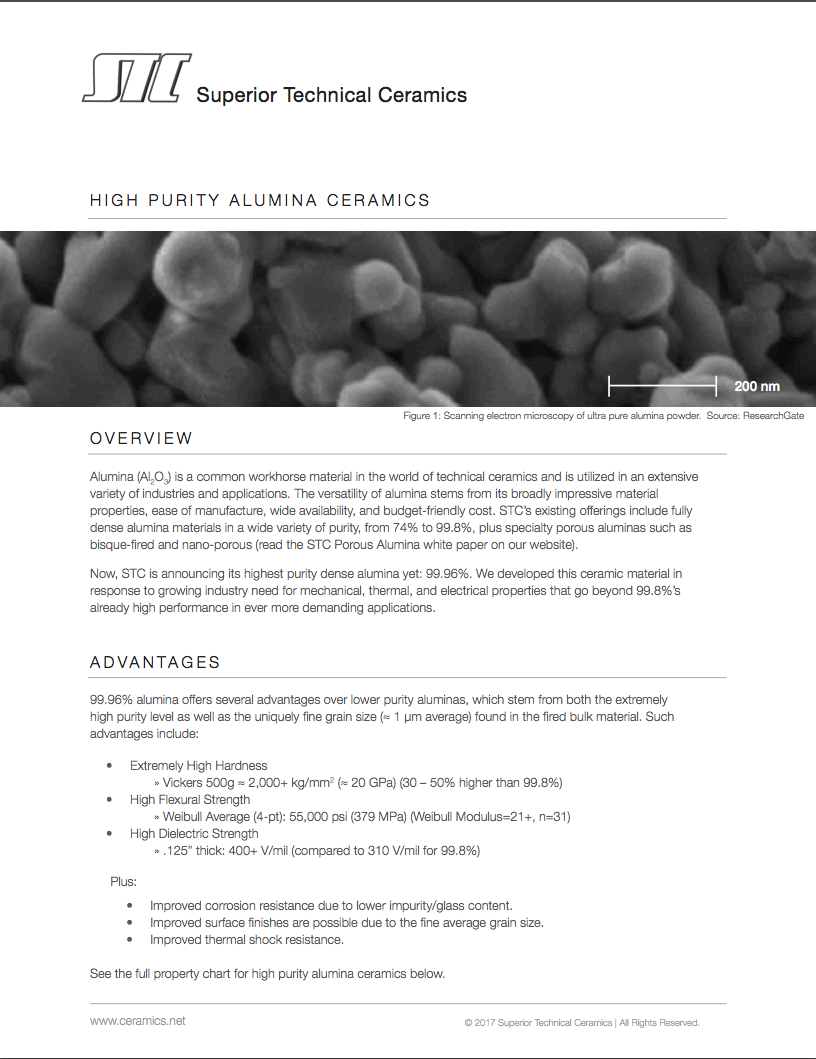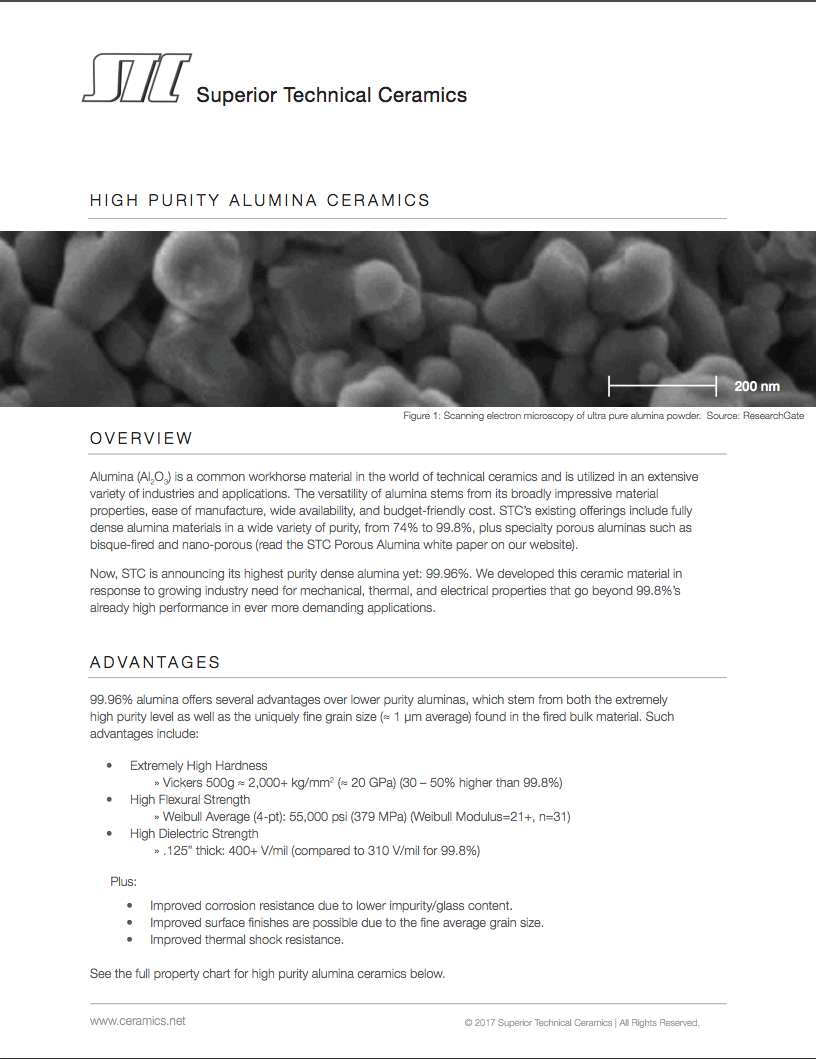The most common material used for structural ceramic parts is alumina. The versatility of alumina stems from its broadly impressive material properties, ease of manufacture, wide availability, and budget-friendly cost. STC’s fully dense alumina bodies are work-horse materials for applications that require electrical isolation, wear resistance, high temperature resistance, and good mechanical strength. The grade of alumina is selected to best fit the application.
It is used in applications from aerospace to medical, from bearings to analytical instrumentation. In addition, these materials lend themselves well to be hermetically sealed to metals through metallizing and brazing methods.







